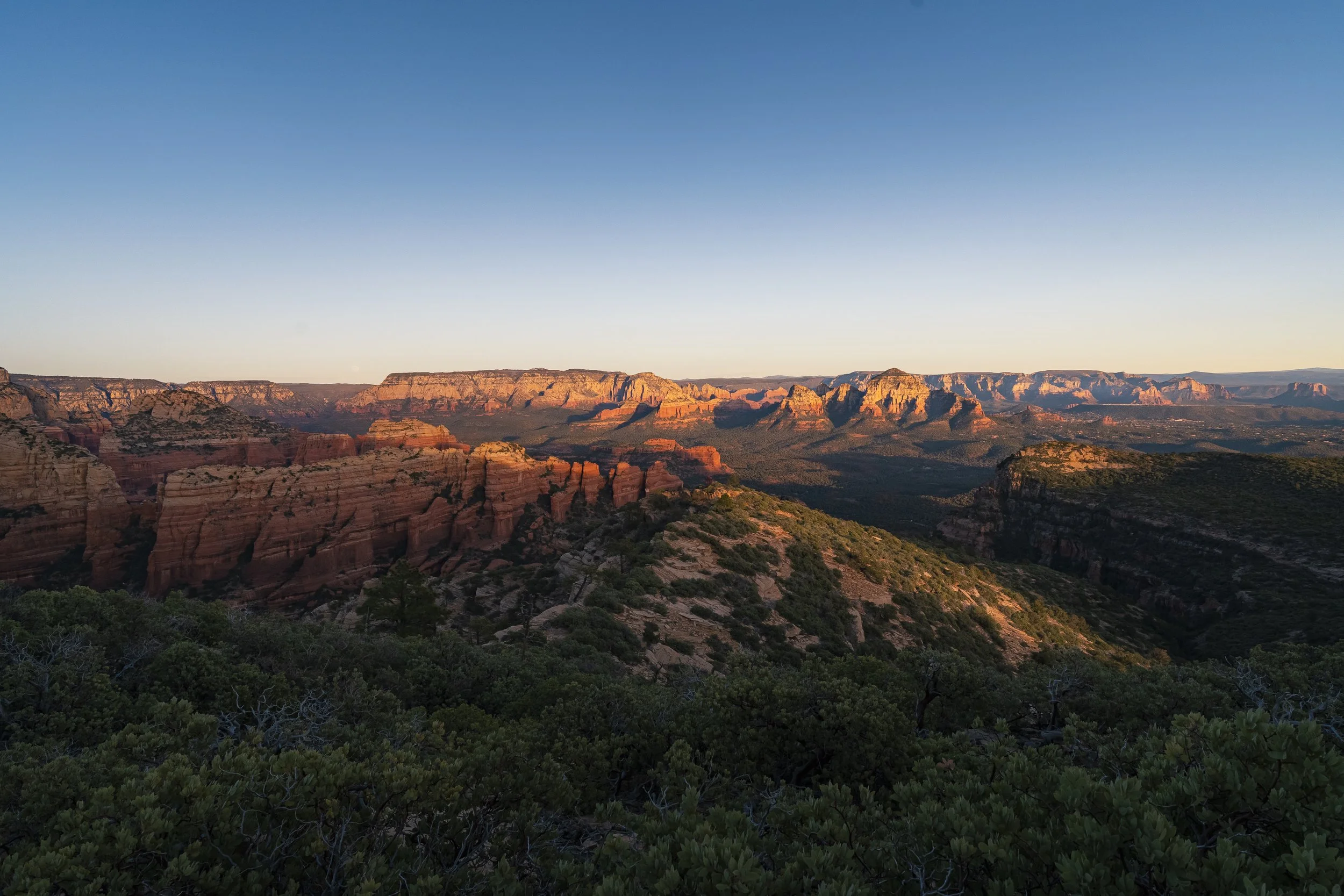Hiking Bear Mountain | The Best Views in Sedona, Arizona
About The Bear Mountain Hike in Sedona
Bear Mountain is a strenuous hike because of its relentless elevation gain, but this Sedona hike is well worth the reward. It offers some of the best views in all of Sedona! Check out my other blog on Schnebly Hill Road for another great viewpoint in Sedona. Once you reach the top there are stunning 360-degree views showing off all of Sedona from above. The hike to the top of Bear Mountain is about 4.6 miles out-and-back, while it is not very long of a hike prepare for a strenuous day because there is 2,000 feet of elevation gain. The trail is well defined and marked with small white dots making it easy to navigate.
Getting to The Trailhead
This hike starts at the Doe Mountain Trailhead which can be reached via Dry Creek Road. Once you get to the end of Dry Creek Road in Sedona you will turn to the left on Boynton Pass Road and at the next end of the road you will go left again. Then the trailhead parking will be just a few miles up on the left. Make sure to purchase a Red Rock Pass online or at the trailhead or use a National Park Pass for parking. From the Doe Mountain trailhead parking area, cross the road to pick up the Bear Mountain Trail heading west and north into the red rock formations.
Tips for Hiking BEar Mountain
Start earlier or later in the day to avoid heat and crowds on the trail
Pack 3-4 liters of water per person and snacks/electrolyte drinks
Wear proper hiking boots with traction and ankle support
Use trekking poles to ease stress on knees during descent
Watch for white trail markers to stay on route
Allow 3-6 hours for the 5 mile round trip hike
Bring lots of sun protection - hat, sunscreen, light layers
Bear Mountain Photography Tips
Use a polarizer filter to enhance color and reduce glare
Shoot during golden hours for warm lighting on red rocks
Include interesting foreground elements to anchor images
Capture from different elevations along the hike
Incorporate hikers in your shots to convey a sense of scale


